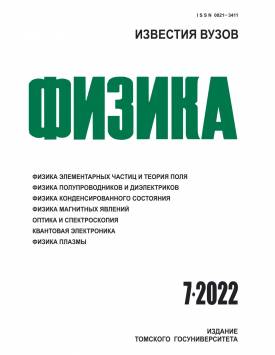Mathematical modeling of diffusion-controlled processes of the near-surface layer structure evolution of W-Cu composite under high-temperature gas flow
The article presents the results of mathematical modeling of copper leakage from a near-surface layer with a thickness of about 30 microns of experimental samples of W-18% Cu composite (VD-MP brand) as a result of exposure to a high-temperature (1500 K) gas flow caused by the diffusion along the boundaries of tungsten grains (GB) from copper particles located in the volume and on the tungsten GB. The parameters of grain-boundary diffusion in the studied composite in the temperature range, when copper particles are in a liquid state, were evaluated. Using the known experimental data, the value of the high-temperature coefficient of grain-boundary diffusion of copper in the polycrystalline tungsten matrix of the composite under study is calculated within the framework of the constructed computer model. The value of the obtained coefficient D = 7∙10-10 m2/s turned out to be close to the corresponding one for diffusion in liquid copper.
Keywords
composite, copper, tungsten, microstructure, diffusion, mathematical modelingAuthors
| Name | Organization | |
| Tokmacheva-Kolobova A.Yu. | Institute of Problems of Chemical Physics of the Russian Academy of Sciences | anastasiia.misis@gmail.com |
| Tokmachev M.G. | Lomonosov Moscow State University | miket@mail.ru |
| Yanovskii L.S. | Institute of Problems of Chemical Physics of the Russian Academy of Sciences | yls@icp.ac.ru |
| Kolobov Yu.R. | Institute of Problems of Chemical Physics of the Russian Academy of Sciences | kolobov@icp.ac.ru |
References
